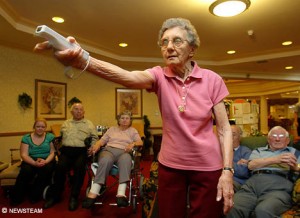It is obvious that geography impacts the aging experience. There is a difference between countries, between areas within a country, between cities and even between neighborhoods. Sometime during the aging experience everybody has a need for safety, connectedness and comfort. Which of these needs are met by the a person’s lifestyle depends on the geography of old age.
Urban/Suburban Area/USA
A study of transportation by older adults by MIT Age Lab and AARP reflects an interesting picture of how mobility is perceived in urban and suburban areas in the US by older adults.
1. The personal car is the preferred mode of transportation.
2. Driving seniors in suburbia cannot really think of an alternative. Not being able to drive comes close to a disability.
3. Urban drivers have more information about alternatives and feel more comfortable taking public transportation.
4. Taxis often do not provide the services seniors need, such as waiting while they shop or bringing in groceries.
5. Walking is not considered a mode of transportation but just a way to stay physically and mentally fit.
6. Biking does not feature as a mode of transportation.
Wherever people live they continue their habits in old age. When they walked throughout their lives they will continue walking, when they took public transportation they will continue doing that. The mode of transportation people are used to and are emotionally connected to is one piece in the puzzle of assessing the needs of a person of old age and is an important piece of information in filling in the ‘blanks’.
Overcoming Geography?
Digital technology more and more contributes to bridging the mobility gap.
Seeing your doctor from home: Denmark leads the way in digital care. Without leaving their home people can ‘go’ to the doctor for check up’s with the help of a computer, a web camera and some simple medical devices. This opens the potential ‘blank’ of loneliness and physical exercise.
Playing tennis from your chair: 11% of people 65 and older have game consoles at home. Nursing homes are bringing in the Wii – people are overcoming the fear of technology.
Digital technology fills some holes but opens others, especially the one of emotional loneliness and physical exercise. Being able to do more from home means less incentive to ‘go out’. Designing solutions to support somebody’s ability to be ‘at home with growing old’ has to take into account not only the functional but emotional needs and be aware of the geography of the aging experience. They have to be a comprehensive, coordinated solutions.


Thank you for your urgently-needed focus on growing old, for your caring thoughts and feelings, and for your diversity of topics. The writer’s voice throughout your articles—I’ve just been introduced to your site and have read them all—is striking; as I read I feel a unique depth of communication.
Having moved into a well-planned, well-run senior community two years ago, I nevertheless find that these assets, alas, do not overcome the drawbacks of daily witnessing a disproportionate number of infirm neighbors. Diversity in population promotes emotional and mental well-being, which then impacts physical health. Here’s to your forward-thinking!
I am an ICT a level student and I would like to ask permission to use a picture on your website in my coursework. It will be used for educational purposes only and your website will be referenced. Thanks.
Feel free to use it and tell us about the coursework you are using it for.